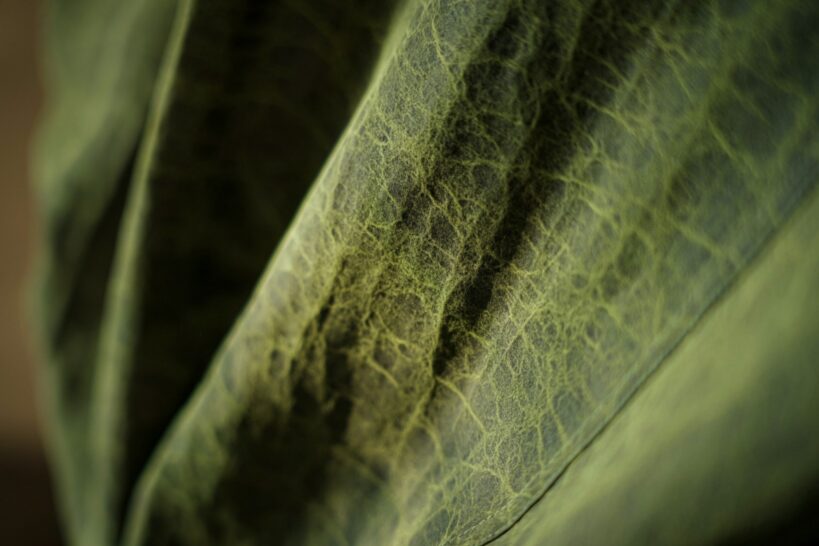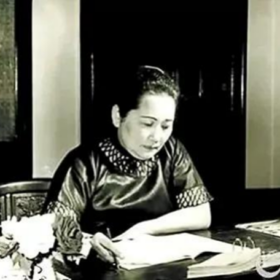
What is Huong Van Sa silk?
Huong Van Sa Silk, also known by various names such as Huong Van Silk, Guangdong Black Silk, Tea Silk, Mud Silk, etc., is a precious type of silk originating from Guangdong, China. The name “Huong Van Sa” suggests that wearing this silk gives a feeling of floating like a cloud. Some interpretations also suggest that the name comes from the soft, cloud-like sounds made by garments when moving.
Huong Van Sa Silk is dubbed “soft gold” due to its high-quality fabric and incredibly meticulous crafting process. It is one of the few types of silk dyed almost entirely with natural dyes. This silk is produced in very limited quantities each season because its quality heavily depends on weather and soil conditions, making Huong Van Sa Silk extremely valuable.
In June 2008, its cultural significance was recognized in the List of Intangible Cultural Heritage of China by UNESCO. On July 6, 2011, the National Quality Inspection Agency approved protective measures for Huong Van silk fiber products.
History of Huong Van Sa Silk
1. When Did Hương Vân Sa Originate?
The technique for making Hương Vân Sa silk using natural plant dyes is believed to be 2,500 years old, originating from Guangdong, China. The earliest records of this silk date back to the Ming Dynasty in the fifth century. The tradition of making Hương Vân Sa silk has been maintained in the subtropical river delta regions with iron-rich mud used to bond with the silk.
2. Hương Vân Sa Throughout History
The oldest artifacts of Huong Van Sa Silk to date are from the late Qing Dynasty, around the year 1906, before the Qing Dynasty ended in 1911. The collection includes 15 garments (11 long dresses, 1 skirt, and 3 sets of clothes) and 2 rolls of fabric, currently preserved and studied at the Honolulu Academy of Arts.
Throughout history, many individuals have popularized the influence of Huong Van Sa Silk among the public. Two notable examples are the writer Eileen Chang (Shanghai, China) with famous works like “Lust, Caution” and “Love in a Fallen City,” and Song Qingling, the wife of Sun Yat-sen, the first President of the Republic of China. Both women were enthusiasts of Huong Van Sa Silk and considered it a symbol of a noble and refined woman. Eileen Chang even mentioned Huong Van Sa in her work “The Story of the Golden Lock” as follows: “Qiqiao wore a white dress resembling fragrant clouds and a black skirt, but her face seemed flushed, from her red eye sockets to her charming cheeks.”
Huong Van Silk was also found in the wardrobe of Toy Lee Goon, a highly influential woman in Maine, USA, who was honored as “Mother of the Year” in 1952. Her Huong Van Silk items are still preserved by collectors and researchers to this day.
Huong Van Sa appears in many old photographs from the 1960s and 1970s, as well as in the 19th-century collection “Illustrations of China and Its People” by John Thomson, who traveled from South to North China. The fabric, known for being cool in hot weather and water-resistant, was worn by the Tanka boat women in Hong Kong while rowing. Local opera actors incorporated delicate Chinese tailoring into Huong Van Sa to enhance the Oriental appearance when musicians began playing Classical Chinese instruments. In the 1960s, Huong Van Sa fabric was also chosen by housekeepers of wealthy families due to its coolness, ease of cleaning, and natural beauty.


Crafting Huong Van Sa Silk
The process of making Hương Vân Sa silk is complex and requires many steps and a large workforce. The quality of the silk depends significantly on the geographic location where it is produced. The dyeing process varies with the local climate, weather, and soil minerals. Huong Van Sa silk is only produced in two places: Panyu and Shunde districts in Guangdong, China, where the soil is most suitable. Silk made elsewhere cannot match the quality of Guangdong-made Huong Van Sa.
Mud plays a crucial role in the dyeing process, with its mineral content affecting the color. Natural materials like the Ju-Liang root, which has a black skin, red interior, and abundant juice, are also used for dyeing.




Temperature and humidity in the summer are essential for producing high-quality Huong Van Sa silk. The process typically occurs from April to November under the best weather conditions, resulting in very limited production. Farmers must choose days with adequate sunshine and no rain, as excessive sunlight can make the fibers brittle and spoil the fabric. Wind direction and humidity also affect the drying process. Farmers only have about 100 suitable days a year to produce Huong Van Sa silk, making the task a race against time.
Climate change has made producing this silk increasingly difficult due to altered iron content in rivers from pollution and unpredictable weather patterns, challenging artisans’ ability to plan and respond.
Characteristics of Huong Van Sa Silk
1. General Characteristics:
Huong Van Sa silk is fire-resistant and water-resistant. It is lightweight and maintains its shape well, making it ideal for summer or early autumn wear. The fabric doesn’t need frequent washing due to its non-absorbent nature. Initially stiff, it softens and conforms well to the body over time. It also has antibacterial and antioxidant properties, making it gentle on the skin.
The final fabric typically has two tones, with one side being glossy black and the other colored. Soil-like effects on the surface add to its unique beauty.
2. Care and Preservation:
Huong Van Sa silk is relatively easy to care for. It is best hand-washed in cold water with mild soap. Do not rub, wring, or twist the fabric to avoid damaging its finish. After washing, roll the garment in a towel to remove excess water and air-dry. It is recommended to store clothes hanging to avoid permanent creases.
